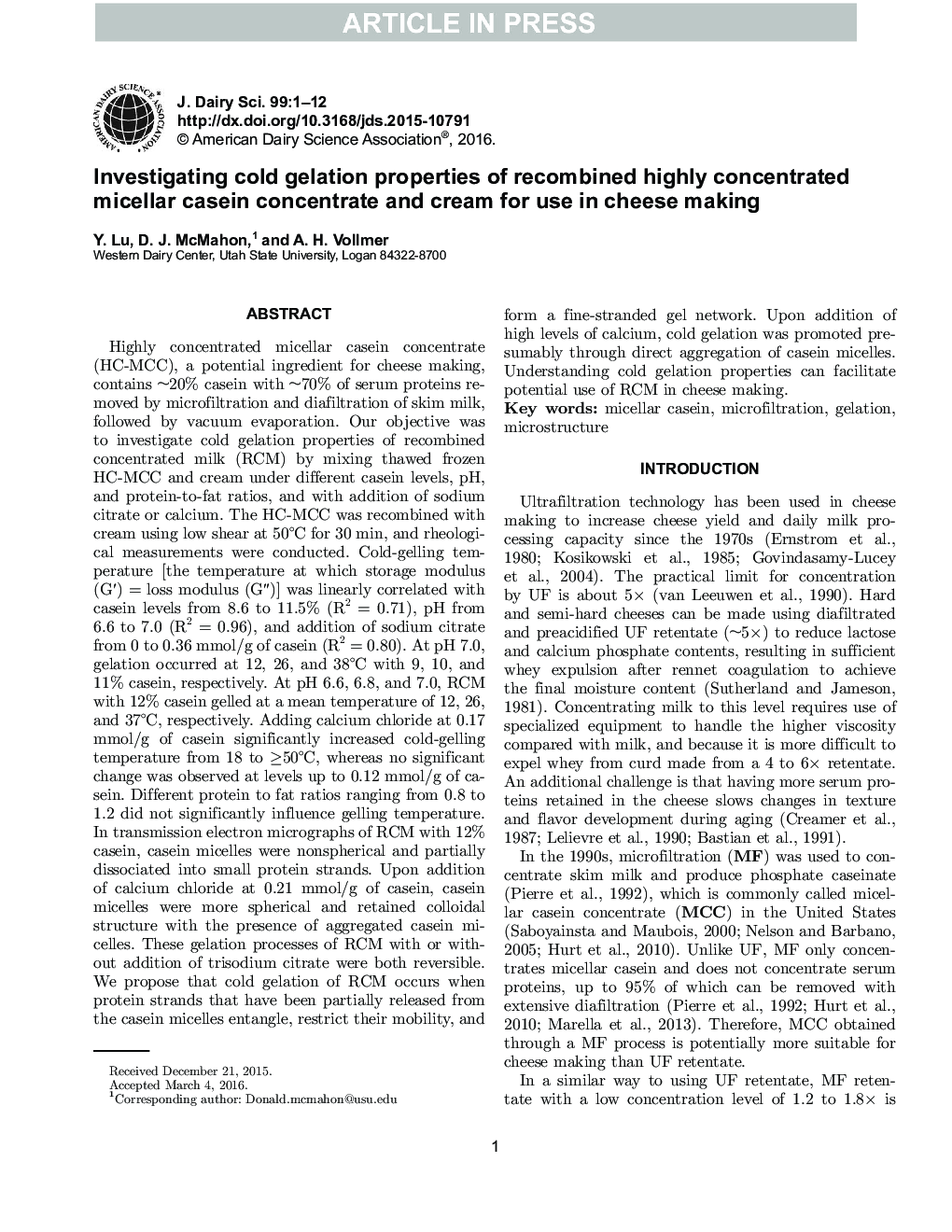| Article ID | Journal | Published Year | Pages | File Type |
|---|---|---|---|---|
| 10973613 | Journal of Dairy Science | 2016 | 12 Pages |
Abstract
Highly concentrated micellar casein concentrate (HC-MCC), a potential ingredient for cheese making, contains ~20% casein with ~70% of serum proteins removed by microfiltration and diafiltration of skim milk, followed by vacuum evaporation. Our objective was to investigate cold gelation properties of recombined concentrated milk (RCM) by mixing thawed frozen HC-MCC and cream under different casein levels, pH, and protein-to-fat ratios, and with addition of sodium citrate or calcium. The HC-MCC was recombined with cream using low shear at 50°C for 30 min, and rheological measurements were conducted. Cold-gelling temperature [the temperature at which storage modulus (Gâ²) = loss modulus (Gâ³)] was linearly correlated with casein levels from 8.6 to 11.5% (R2 = 0.71), pH from 6.6 to 7.0 (R2 = 0.96), and addition of sodium citrate from 0 to 0.36 mmol/g of casein (R2 = 0.80). At pH 7.0, gelation occurred at 12, 26, and 38°C with 9, 10, and 11% casein, respectively. At pH 6.6, 6.8, and 7.0, RCM with 12% casein gelled at a mean temperature of 12, 26, and 37°C, respectively. Adding calcium chloride at 0.17 mmol/g of casein significantly increased cold-gelling temperature from 18 to â¥50°C, whereas no significant change was observed at levels up to 0.12 mmol/g of casein. Different protein to fat ratios ranging from 0.8 to 1.2 did not significantly influence gelling temperature. In transmission electron micrographs of RCM with 12% casein, casein micelles were nonspherical and partially dissociated into small protein strands. Upon addition of calcium chloride at 0.21 mmol/g of casein, casein micelles were more spherical and retained colloidal structure with the presence of aggregated casein micelles. These gelation processes of RCM with or without addition of trisodium citrate were both reversible. We propose that cold gelation of RCM occurs when protein strands that have been partially released from the casein micelles entangle, restrict their mobility, and form a fine-stranded gel network. Upon addition of high levels of calcium, cold gelation was promoted presumably through direct aggregation of casein micelles. Understanding cold gelation properties can facilitate potential use of RCM in cheese making.
Related Topics
Life Sciences
Agricultural and Biological Sciences
Animal Science and Zoology
Authors
Y. Lu, D.J. McMahon, A.H. Vollmer,
